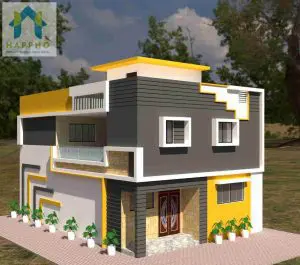Burnt Clay Bricks are one of the most commonly used materials in construction industry. Masonry wall are build using these bricks ,brick masonry wall can be load bearing and non-load bearing(Framed structure) types depending on their structural functionality and its thickness are 4” & 6” (internal walls) & 9”(external walls, common wall between two individual units).
Bricks is a critical construction material and its selection should be given its due importance.
Bricks used at site are to be tested for quality to ensure their suitability for building construction.
Types of tests performed to evaluate Quality of Bricks
The following are the tests that needs to be done on the brick
1. Site tests on bricks
- Hardness Test
- Dimensional Tolerance Test
- Soundness Test
- Impact Test
- Colour Test
2. Laboratory Tests on bricks
- Water Absorption Test
- Compressive Strength Test
- Efflorescence Test
- Warpage Test
1. Site Tests for Evaluating Quality of Bricks
The following tests can be done at site without any equipment required. These tests will give an idea about the quality of bricks.
a. Hardness Test
Hardness test is done to check hardness of brick. This is an indirect test to know its compressive strength and to know how well the brick is kilned. This is tested by using a sharp tools or finger nail and scratching against the brick surface. If there is no impression of the scratch on the brick surface, the brick is sufficiently hard and fit for use
B. Dimensional Tolerance Test
Dimensional Tolerance test is used to check the shape & size brick. In this test 20 bricks are arranged them along its length, breadth, and height. The dimensions are compared to each other and compared with the standard dimensions.
C. Sound (ringing) Test
Sound test of a brick is field test to understand the quality of bricks received. In this test, two (2) bricks are struck with each other. Good quality bricks usually don’t break and should produce a metallic sound (bell ring) sound when struck with each other.
D. Impact test
In this test the bricks are allowed to fall from a height of 1 meter on ground (not hard surface). Good quality brick shouldn’t break. Incase it breaks, it’s better not to use for construction.
E. Color test
Well kilned (burnt) clay brick are of uniform in colour throughout its section and shades of red. Black bricks are over burnt, not of good quality.
2. Laboratory Tests To determine the Quality of Bricks
A. Water Absorption Test
Absorption test is conducted to determine the amount of moisture content that the brick absorbs. If the bricks absorb more than 20% of the weight of dry brick, then the brick should not be used for construction as they absorb water from the cement mortar reducing the overall brickwork strength.
In this test 5 bricks are taken from the sample and dry weight of each brick is taken. Weights are again recorded after fully immersing the bricks in water for 25. Water absorption is calculated based on both these weights.
Detailed Procedure for Water Absorption of a Brick
B. Compressive Strength Test
Compressive Strength of a brick is determined by placing a brick in the compressive testing machine and loading the top face (frog face) till failure. The brick frog face if filled with mortar and cured for a period of 4 days before.
A minimum compressive strength of 3.5 N/mm2 should be obtained as per IS codes. If the compressive strength of the brick is less than 3.5 N/mm2, those bricks should not be used for construction purposes.
Detailed Procedure for Calculating Compressive Strength of a Brick
C. Efflorescence Test
Efflorescence is a fine, white, powdery deposit of water-soluble salts left on the surface of masonry as the water evaporates. A good brick shouldn’t contain soluble salts in it.
In this test bricks are immersed in water for 24 hrs and then allowed to dry completely. If any white or grey patches appear on the brick surface, then the brick contains soluble salts.
D. Wrappage Test
Wrapage test is to determine how flat the brick surface is. If the bricks are heated and cooled correctly, Wrapage should be under permissible limits. A convex wrapage and a concave wrapage test is.
Detailed Procedure for Calculating Wrapage of a Brick











